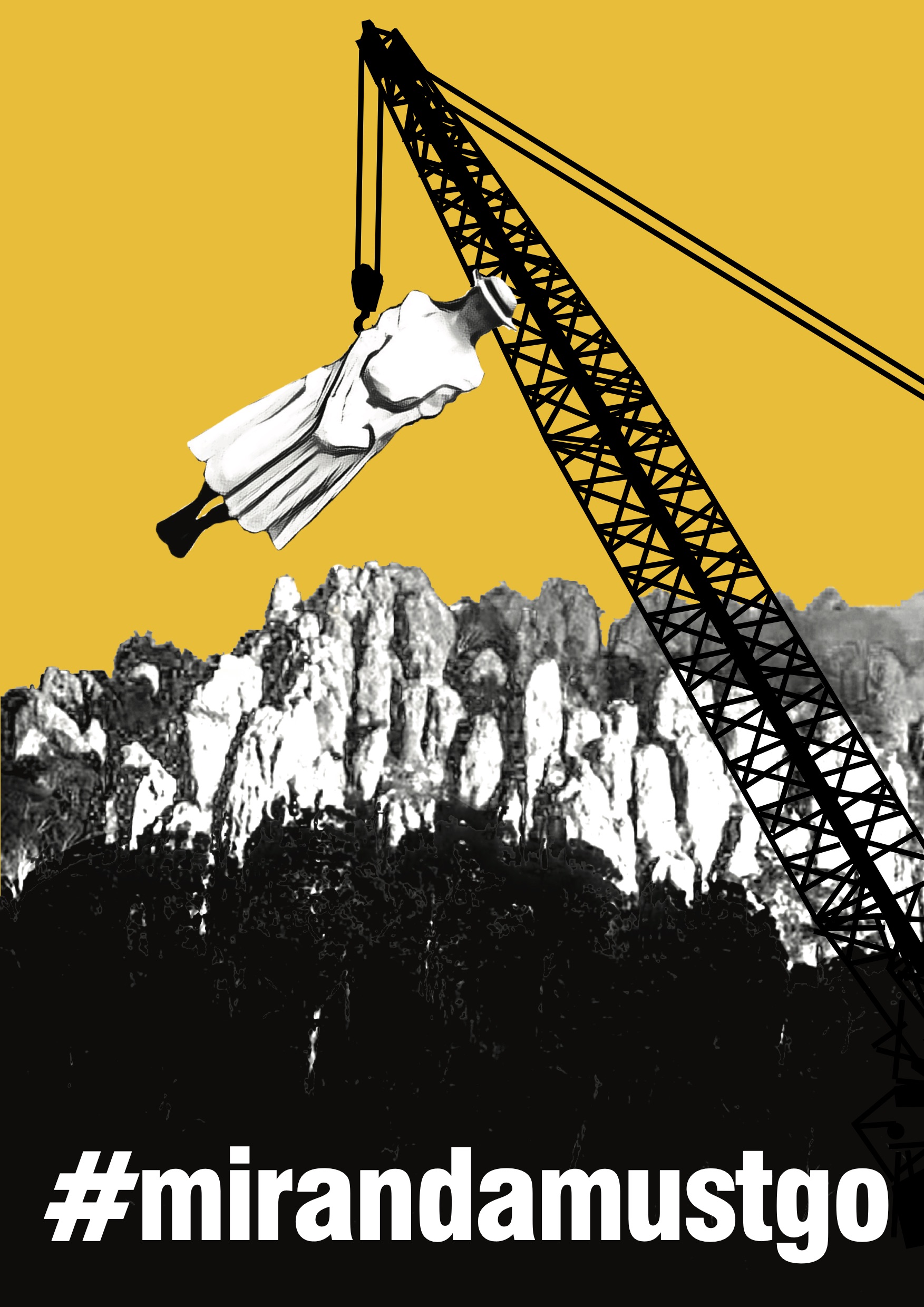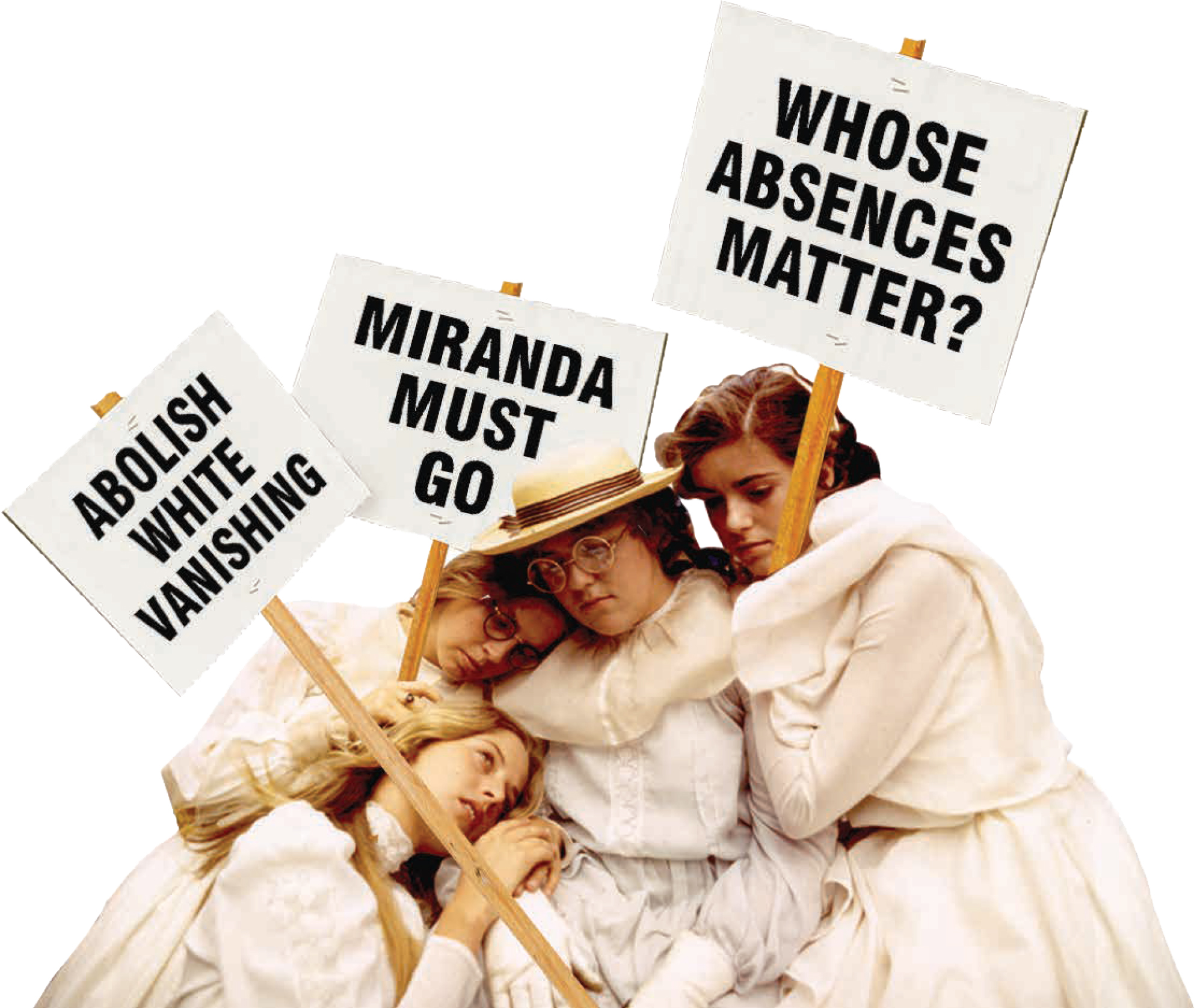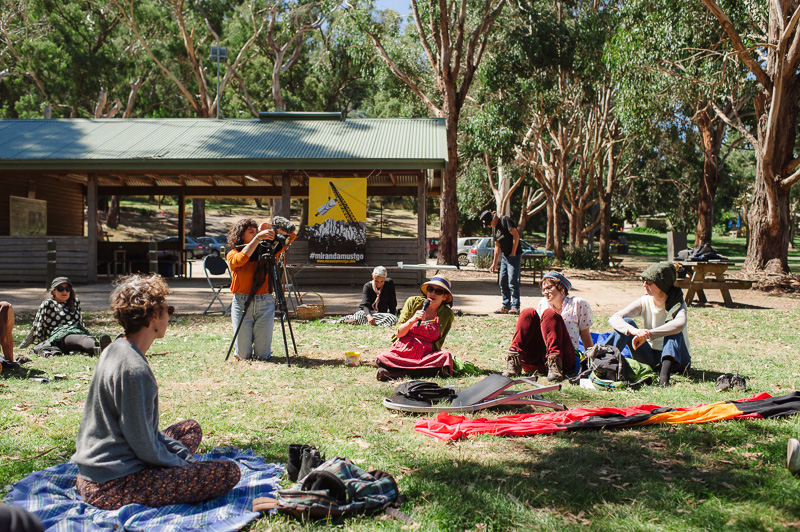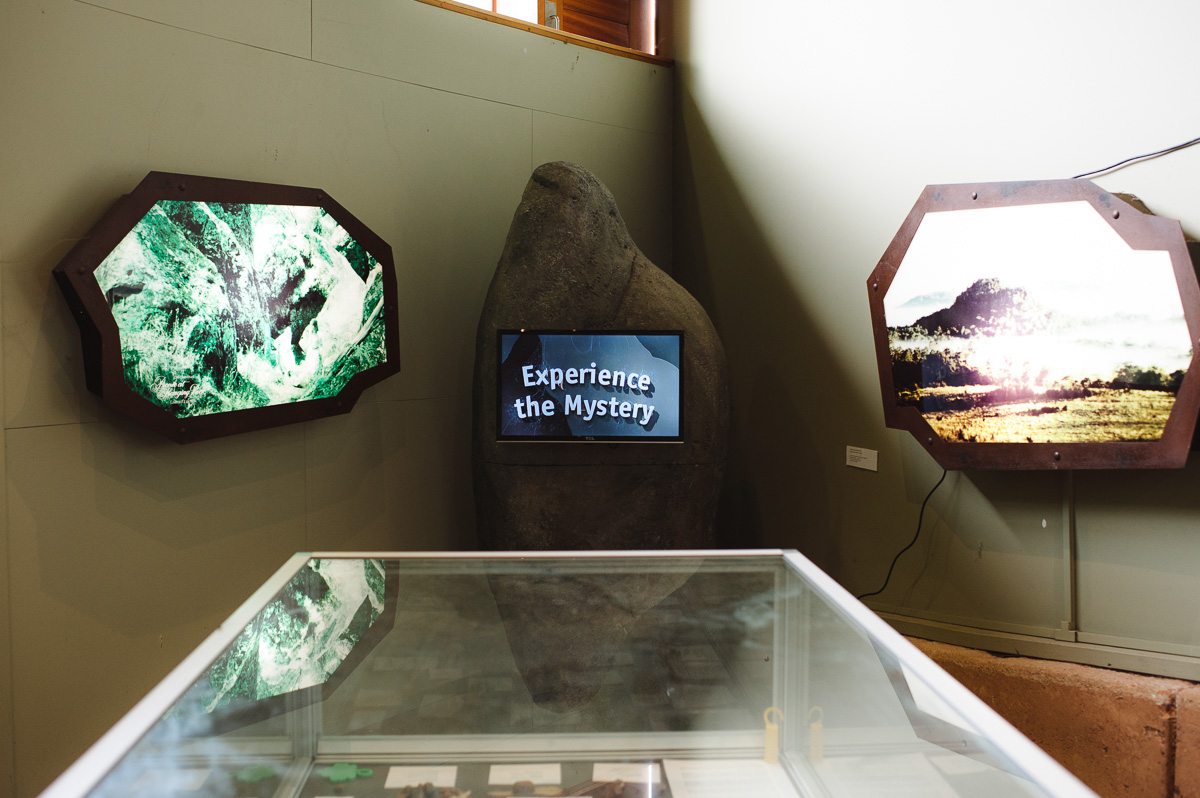#MIRANDAMUSTGO
Artwork — 2017Artwork by Amy Spiers.
Graphic design by Stephen Mitchell.
Videography and editing by Zoe Scoglio, with music by Marco Cher-Gibard.
Mixed media, dimensions variable.
Socially engaged, site-responsive artwork and creative media activism campaign developed as part of practice-led PhD research following fieldwork at Ngannelong/Hanging Rock, Central Victoria.










#MirandaMustGo was a creative campaign conceived as part of Amy Spiers’ practice-led PhD research. It aimed to contest habitual associations at the iconic site of Hanging Rock loacted in Central Victoria with a white vanishing myth. Both creative media activism and socially engaged artwork, #MirandaMustGo called upon settlers to end their obsession with the character of Miranda and the fiction of vanished white schoolgirls derived from Joan Lindsay’s classic 1967 novel, Picnic at Hanging Rock, and to instead meaningfully address the real losses and destruction to Country experienced by First Peoples in the region as a consequence of rapid and violent colonial invasion. The campaign urged acknowledgement of Hanging Rock’s important ongoing cultural significance for sovereign First Peoples, the Wurundjeri, Djarra and Taungurung, and that the site was known by other names, possibly Ngannelong, before European occupiers arrived.
The artwork mimicked the established methods and aesthetics of grassroots activism and included: the creation of posters, shareable graphics, t-shirts, campaign videos, and a website. A protest anti-picnic was also held at Hanging Rock on 14 February 2017, with a presentation from legendary Aboriginal activist Robbie Thorpe. Coinciding with the anti-picnic was the launch of a temporary #MirandaMustGo video installation presented inside the Hanging Rock Discovery Centre.
#MirandaMustGo attracted public attention via a series of social media posts launched in January 2017 which quickly went viral and became the subject of national and international media attention. The campaign had broad public resonance as it communicated complex, critical arguments concerning Australia’s denial of its violent colonial past into a meme-friendly, sharable format and provided a unique challenge to a seemingly innocuous cultural icon, Picnic at Hanging Rock, in the 50th anniversary year of its publication.
To date the campaign has generated numerous news features, articles and public commentary and has been discussed by theorists of visual arts, literature, film, activism, post-colonialism and Australian history, as well as used in teritary and secondary education of Picnic at Hanging Rock. Artistic outcomes and campaign ephemera have been collected by the National Library of Australia.
Consequently, the project has prompted public discourse and reconsideration of the heritage information and narratives available about Hanging Rock. Most significantly, since the campaign’s launch all three sovereign First Peoples groups have had their perspective on Hanging Rock sought out with more frequency and media generated by the campaign is referred to by people wishing to have a better understanding of the site’s little-known colonial and Indigenous history.
Artsitic outcomes of #MirandaMustGo have been exhibited in the group exhibition, I WAS HERE, curated by Anna Louise Richardson at Fremantle Art Centre in 2017, and were a finalist in the Incinerator Gallery’s Incinerator Art Award: Art for Social Change in 2018.
The ongoing effects and reach of the campaign continue to inspire Amy’s current research and artistic practice.
Further information
︎ #MirandaMustGo website, updated in 2024
︎ Original #MirandaMustGo website archived at National Library of Australia.
︎ Spiers, A. (2017) "What Really Happened at Hanging Rock." VICE Australia.
︎ Spiers, A. (2018) “Miranda Must Go: Rethinking the generative capacities of critique, discomfort and dissensus in socially engaged and site responsive art”, PhD thesis, University of Melbourne.
︎ Spiers, A. (2019) "#MirandaMustGo: Contesting a settler colonial obsession with lost-in-the-bush myths through public and socially engaged art." Art & The Public Sphere 8, no. 2: 217-234.
Videos
︎ Experience the Mystery (2017)
︎#MirandaMustGo (2017)
︎ Robbie Thorpe Interview (2017)